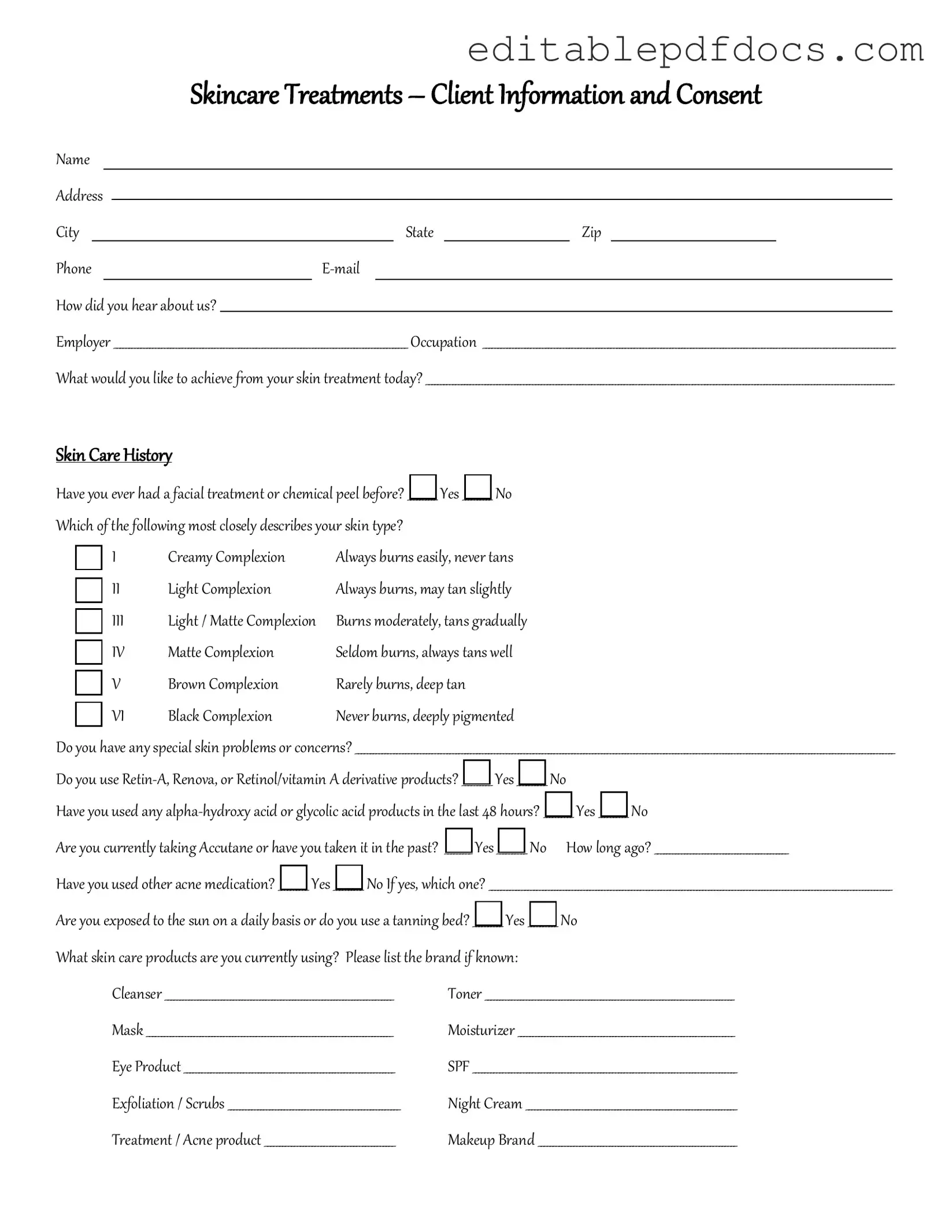Filling out a Facial Consent form is an essential step in ensuring a safe and effective treatment. However, many individuals make common mistakes that can lead to complications or misunderstandings. One frequent error is not providing complete personal information. When clients skip sections or leave out details like their contact information, it can create challenges in reaching them for follow-up care or clarifications.
Another mistake is failing to disclose relevant medical history. Individuals often underestimate the importance of this information. Conditions such as allergies, skin sensitivities, or prior cosmetic procedures can significantly impact the treatment process. By omitting this information, clients may inadvertently put themselves at risk for adverse reactions.
Additionally, some people neglect to read the entire form before signing. This oversight can lead to misunderstandings about the treatment, potential risks, and aftercare instructions. Taking the time to thoroughly review the document ensures that clients are fully informed and can make educated decisions about their care.
In some cases, individuals may not ask questions when they are unsure about certain terms or procedures outlined in the form. It’s crucial to seek clarification to avoid confusion. A lack of understanding can lead to unrealistic expectations about the outcomes of the facial treatment.
Moreover, clients sometimes fail to update their consent forms if their circumstances change. For instance, if a person develops a new allergy or medical condition, it is vital to inform the service provider. Keeping the consent form current helps ensure safety and effectiveness during treatments.
Lastly, signing the form without verifying the date can lead to complications. An outdated consent form may not reflect the most current policies or procedures of the practice. This simple oversight can result in misunderstandings regarding consent and treatment protocols.
